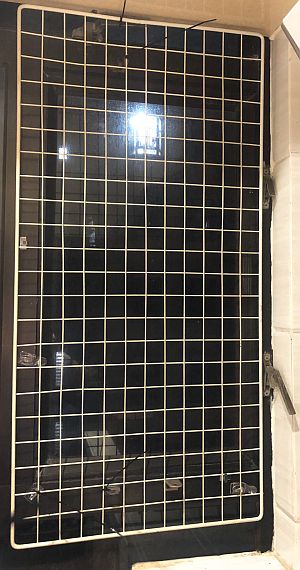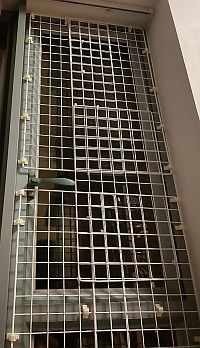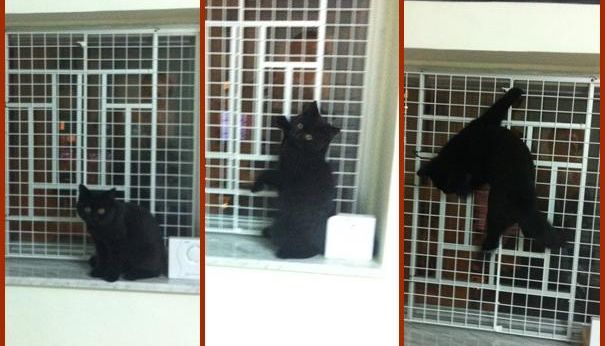We look at four things when we consider window nets:
- Coverage: have all the necessary windows been made safe?
- Hardness: is the window net going to bend or flex?
- Fixing: is the window net going to come loose or come off?
- Gaps: can a cat squeeze through the net?
Let’s review these in a bit more detail.
Coverage
Does every window that could open need a net? Not really. Lower windows that people can easily reach always need nets. Higher windows that are out of reach (without steps or a chair) don’t need nets as long as you never open them. We like to see these windows fastened closed with cable ties.
Easy-to-reach windows in every room need a net – including the bathroom, kitchen, and all the bedrooms. It’s perfectly fine to consider some rooms “off limits” to your cat… but cats have a way of sneaking into rooms (especially where they aren’t allowed!), and you have to assume that is going to happen.
Hardness
Window netting must be rigid. Anything based on fabric is unacceptable because it will eventually be torn. Anything flexible or soft, like plastic mesh or metal barbecue mesh, is also a bad idea. Cats can be stronger than you think, and can also be incredibly persistent, so if there is any possibility that they can move the window nets, they’ll probably try to do that – and keep trying until they succeed. We prefer to see a heavy-duty metal grid, like the ones in the following photographs:

A rigid metal mesh, which is preferred for window nets.

Another example of a rigid metal mesh.
Fixing
The window nets must be firmly held in place in a way that will not become weaker over time. Solutions that we accept – plastic zip-ties, having the nets screwed to the window frame, also purpose-made latches and hinges so your window nets can swing open and closed.
Solutions that we might not accept include wire twist ties (cats love playing with these, and they can become looser over time), any fixings based on adhesive sticky pads (these also become weaker over time), and velcro.
Make sure the window nets are fixed as close to the edges of the net as possible. If the fixing points are too far from the edge, even with rigid nets, cats might be able to push their way through.
It should be possible to grip your window net and give it quite a firm shake. It should not come off, and no gaps should open up. We may even ask for a video of you doing this! Your cat may well also try to test your window nets:

This is one reason why nets need to be firmly fixed in place
Gaps
Kittens especially, but even adult cats, can squeeze through surprisingly small gaps. That means that your window nets should have no gaps at the edges of the window (especially at the top), or where two pieces of netting overlap (At overlaps, the two pieces of netting should be firmly fixed to each other).
Many windows have existing child-proof barriers like this:

Example of a child-proof barrier – this won’t protect cats, and your window nets may need to be installed behind this barrier to avoid gaps
Sometimes, if the barriers are big or if they stick out a long way from the window, fixing the window nets to the front of these barriers creates a gap around the edges. Your cat-proof window nets might have to be fixed behind the barrier, directly against the window. You can certainly attach the window nets to the child-proof barrier.
We may ask for photos of your nets from different angles, and we may reject the nets if any gaps are too big.